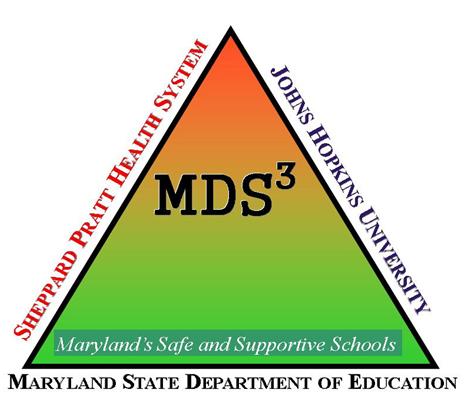
To many young children, bullies are seen as the playground “meanie” or the “big guy” who pushes students into lockers. Coming home means finally getting away from all the bullies at school. Walking through the front door is a welcome safety zone from bullies – a place that students can go and not have to worry about anything outside of those four walls.
But now the game has changed; bullies from school that students leave on the bus reappear. Bullies come home with them in their hands: on their smart phones and on the computer screen in their own rooms. The one place that has always been a safe haven is now a war zone, even more vicious than the one at school.
What defines a bully is an argument as old as the bullies themselves. Middletown High School senior Megan Runnells said her description of bullying is “when someone intentionally says or does something to harm another person.”
MHS guidance counselor Paula Langley said a “bully is someone who feels they are powerful or stronger than others.”
Identifying bullies online is harder than identifying them at school, especially since the attacks on students are all done from behind a screen. MHS senior Olivia Ginebra said, “They do it online a lot now, but in high school, it just shows who is immature and who is not.”
MHS senior Colson Kirchner said, “Bullies aren’t as violent – they now attack through social media.”
Cyberbullies are able to attack students in ways that most would never expect. “You don’t know who it is online; it could be a fake profile,” said Kayla Brody, MHS freshman. Students can be unsure of something as simple as another student’s profile name being a lie.
This allows the bully to be someone the student can trust who can later use the information the student discloses to them against them. As freshman Matt Dillard said, “You can never really know who you are talking to online.”
This can also be caused from “former friends whom now aren’t – breaking up of friend dynamic; social media comes into play by going back and forth via that venue,” said MHS Assistant Principal Chris Bittner when talking about the most common form of bullying he, as an administrator, encounters.
The use of “spreading rumors online and even telling the truth online or threatening to hurt a person” is one of the most commonly seen forms of bullying in high school, added Langley.
The change in dynamic allows people to use social media as a tool to attack former friends or other students. Students fall back on information they know and use it against the students on social media; this is the way bullying is most frequently presented, according to both MHS administration and guidance.
Social media makes ganging up on a victim easier than doing it in person. MHS freshman Matthew Dillard said that he has seen online bullying take the form of “ganging up or teaming up on someone that your friends are picking on or someone smaller than you.”
“People downplay social media because they can deny writing or blame someone else. Kids don’t get breaks from bullying, but also get other people involved through instigating,” added Langley.
Bullying has become a social norm that is widely accepted and many students don’t even consider themselves bullied. The line between teasing and legitimately bullying has become frayed and blurred through the generations.
In order to prevent bullying from occurring, students, parents and teachers must know how to identify it and stop it, but, most importantly, must be aware of it. Bittner said, “People being bullied are afraid to say anything because staff and parents can confuse bullying with joking around.”
Since bullying occurs more online, students must find other ways to confront the bullies.
The new wave of social media has created this new battleground. Bittner said that measures such as “working more closely with guidance and teachers and parents to bring bullying to their attention” can help remediate cases of this new kind of bullying.
MHS has taken precautions when it comes to the bullying situation. On the MHS website, there are links to awareness sites and techniques that students can use in a bullying situation.
“There is a problem nationally, so we suffer from that as most do nationally. Middletown High School is considered ‘under norm’ for Frederick and national perspective, but if bullying is occurring it is a problem,” added Bittner.
In order to deal with the bullying that occurs in the school, Bittner said, “Middletown has MDS3, and administration works closely with guidance to identify situations early and mediate, and we also have bullying [complaint] forms.”
MDS3 is an abbreviation for Maryland Safe and Supportive Schools. “It is a committee made up of staff members from various departments that analyzes data to make decisions, programs, and training that promotes positive school climate,” said MHS guidance counselor Brad George, who is also a member of MDS3. George added that the committee reviews and considers “focuses that are about the overall behavior and peer climate of the school.”
This committee works to create a positive environment for students at MHS. It also identifies the school’s weaknesses and works on them to improve the school climate; for example, the new slogan, “Ready, Respectful and Relentless” was created by MDS3.
The school has given students access to forms that they can complete in order to file complaints against other students when it comes to bullying. They help the school become aware of the situation and deal with it accordingly.
“I have never been a big person with suspension; it doesn’t stop bullying. When it comes to bullying, change the framework. We have to support the victim and educate the bully,” added Bittner.
Langley added, “The system has gotten better because of the way the school presents it. Counselors are there to clean up and explain why they – the bully – were wrong.”
In order to control the situation, MHS has taken the necessary precautions, but permanently stopping bullying may be completely out of the school’s responsibility or power.
Students are aware of ways that they can help improve the bullying situation. MHS sophomore Shawn Green said, “Students should talk to someone as the bullying occurs, or if you’re a bystander, you can tell an adult.” Dillard’s idea of how to eventually stop bullying was by “educating people that cyberbullying is real and spread the word.”
Teachers and administration at MHS have taken precautions to end bullying, but educating people on the subject is something they strive to do. Langley said, “Publicizing the fact that we won’t ignore bullying and intervene when it is seen, but also continuing to educate people” will help the cause.
Bittner added, “What bullying is today isn’t bullying when I was in school; parents don’t understand or see that depth. Staff must be able to identify and address bullying and take the necessary measures.”
But in order for bullying to completely come to an end, as MHS senior Megan Runnells said, “People need to be nicer to one another.”












